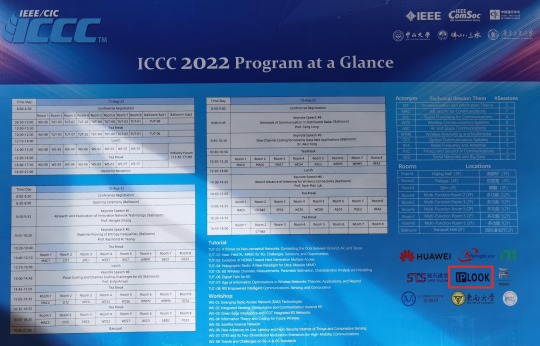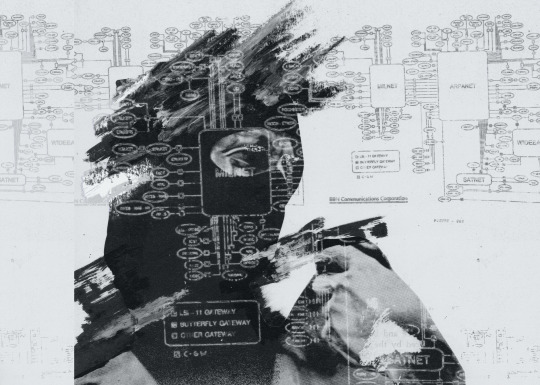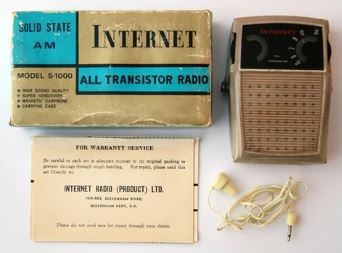#Satnet
Text
Mewling Glyph 037

Sas
[sas]
1. little, small
2. diminutive marker
Today's glyph is the glyph for "small". Mostly, it's used for the diminutive, when it's prefixed to a noun. If you take the word netal "tree", and affix the diminutive onto it, it becomes satnetal which literally means "little tree" but can mean "sapling".
9 notes
·
View notes
Text
IPLOOK Unveiled Satellite Simulation Platform on ICCC 2022

Foshan, China, August 11, 2022 - The 11th IEEE/CIC International Conference (ICCC 2022) was kicked off, themed by Connecting Intelligence, Communications for Future.
As one of the workshop committees and organizers, IPLOOK brought the self-developed Satellite Simulation Platform to discuss the technical issues about satellite internet network with worldwide industry experts in the International Workshop on Satellite Internet Network (SatNet).

During the event, IPLOOK exhibited 5G core network (5GC), IP Multimedia Subsystem (IMS), and LEO Satellite Solution, which attracted visitors and experts to stop by and left with discussions.
Global insights from IPLOOK shows steady growth in satellite network and sustainability prioritization. Industry expert in satellite from IPLOOK hosted the process and discussed significant advances in satellite technology and issues such as innovation, research, and automation.
"Satellite network is now the source of competitive advantage with digital transformation leading the way," said Doctor from IPLOOK. "Our partners and customers trust IPLOOK to deliver the innovation through mobile core network solutions, and consulting services that are helping to ensure the business success."
As a leading mobile core network vendor, IPLOOK is undertaking advanced research on the telecom industry designed to better support clients and fuel the industry growth.
1 note
·
View note
Note
Does Ava make money streaming?
yeah! she does games mostly, the lunar colonies don't have fully integrated satnet yet
0 notes
Photo

vandal david
#art#collage#balaclava#mask#negative#monochromatic#design#aesthetic#black and white#schematic#painting#statue#retrofuture#arpanet#milnet#satnet#communications#internet#sabotage#compromise#blueprint#cyberpunk
209 notes
·
View notes
Text
The Five Internets
New Post has been published on https://ahostiletakeover.kandiliotis.com/the-future-internets/
The Five Internets
A look at the mind-mapping process behind the development of future of the internet, or The Five Internets as it ended up being called in the novel.
The Cobweb
This is the old internet, the dysfunctional mess we use today. In the near future, this will still be around but no one in their right mind would want to use it.
Satnet
Designed and deployed by Meganat’s Jim Dochersky, this private internet utilises low-earth-orbit satellites to connect paying customers.
Ambercast
A closed Wide-Area-Network, this optical web is the first private and secure internet used by governments and corporations.
Episoft
A peer-to-peer, NearMe-Area-Network, this open internet applies handsets that act as relay mesh-stations for communication traffic. The more devices in the vicinity, the faster and deeper the coverage.
Angry Tree
This is the hacker’s internet that funnels into existing communication networks, employing ‘dryware’ to create branches between them.
1 note
·
View note
Photo

Радиоприемник «Интернет»: неожиданный привет из 60-х
Как-то раз известный телеведущий и любитель антиквариата Марк Хилл поделился историей о неожиданной находке: ему в руки попал старый радиоприемник, который называется… «Интернет».
Прогуливаясь по барахолкам и антикварным магазинам, часто можно обнаружить весьма забавные и интересные предметы. Марк Хилл — человек, который занимается этим профессионально: бывший сотрудник лондонской антикварной фирмы, а ныне весьма популярный автор и телеведущий. Его любовь к старой технике заставила Марка собрать в коллекцию множество самых удивительных образцов, но больше всего он любит видавший виды транзисторный радиоприемник. На первый взгляд, он мало чем отличается от других моделей своего времени, однако называется это чудо инженерной мысли… «Интернет».
Первый транзисторный радиоприемник появился в 1954 году, после чего завоевал бешеную популярность по всему миру. В 60-х и 70-х годах они выпускались огромными тиражами как в западных странах, так и в СССР. «Интернет», судя по дизайну упаковки и корпуса, относится к поколению конца 60-х, что само по себе является весьма интересным фактом. Никто на самом деле точно не знает, когда впервые было использовано само слово «интернет». Считается, что примерно с 1883 года оно вошло в оборот, но не в качестве существительного, а как прилагательное или глагол, обозначающие цепь взаимосвязанных движений. Лишь в 1977 году слово обрело форму существительного, когда пионеры сетевых технологий, Винт Серф и Боб Хан проводили демонстрации первых сетей — ARPAD и SATNET. До 1990-х годов оно практически не выходило за рамки узкопрофессиональной терминологии — и вот внезапно выяснилось, что по‑настоящему ввел этот термин в обиход как раз радиоприемник!
По мнению Марка, самой большой трагедией Internet Radio Product Ltd является то, что компания своевременно не приобрела права на использование этого названия — сейчас она купалась бы в деньгах. Что еще удивительнее, дизайн самого устройства отлично вписывается в современные тенденции: кремовый пластиковый корпус со скругленными углами и матовый дисплей напоминают легендарный iPod. В комплекте с приемником даже шли белые наушники! Судя по всему, дизайнер Джонатан Ив, придумавший внешний концепт iPod"а и другой «яблочной» техники, вдохновлялся именно электроникой конца 60-х.
Один из первых компьютеров Apple в 2012 году был продан на аукционе за 320 000 фунтов стерлингов — при том, что в 1976 году стоил всего 666,66 долларов. Учитывая то, что с годами интерес к раритетам лишь возрастает, не исключено, что и радио «Интернет» в будущем принесет своему обладателю баснословное состояние.
1 note
·
View note
Text
pleased to announce the IPO/ICO for my new quantum cloud cannabis crypto neural satnet! give me money
4 notes
·
View notes
Text
SATNet: Bridging deep learning and logical reasoning with differentiable SAT
https://arxiv.org/abs/1905.12149
Comments
1 note
·
View note
Link
0 notes
Text
NCC X IPLOOK: Training meeting about satellite communication

Advanced technology is always the trump card in the telecom industry.
As a leading end-to-end mobile core network solution vendor, except for 5G Core Network (5GC), 4G Core Network (EPC) and related core network solutions, IPLOOK also keeps developing innovative solutions with the latest technologies such as satellite network (SATNET) and 6G technology.
Training meeting about 6G technology and satellite communication
Themed by "6G Technology and Satellite Communication", IPLOOK and the Nigerian Communications Commission (NCC) held a training meeting on June 28th, 2022.
IPLOOK' s technical team led by Dr. Wang Dan and Mr. Owen Ouyang gave a presentation, including four major parts: the introduction of satellite communication (Satcom), the current status of Satcom, the satellite solution integrated with cellular network and AI technology, as well as satellite orbits in detail.
NCC showed great interest in IPLOOK’ s satellite solution, which releases a signal that the meeting is a golden opportunity for IPLOOK to assist Nigeria to build the 4G/5G and even 6G network.
IPLOOK satellite solution
Satellite communications (SatComs) have entered a period of renewed interest motivated by technological advances and nurtured through private investment adventures.

Various applications and customized requirements entitle a new communication evolution with the ability of low latency, high throughput, intensive computing performance and artificial intelligence. Satellite communication system becomes a new option for operators and enterprises to guarantee seamless coverage with high performance in remote regions.
The advantages of IPLOOK satellite communication system
· Rich available spectrum resources
· No geographical environment constraints (strong mobility)
· Flexible communication mode
...
IPLOOK will keep innovating new technologies with our professional technical team all the time!
1 note
·
View note
Text
Satellite Commercial Internet
Satnet Internat and Communication
Satcomm/Satnet Communication Going Satellite Wireless Cellular and wireless Internet Network
Satspeeds - Internet Speed
0 notes
Text
Apa itu Internet MyRepublic?

Internet tidak seperti kebanyakan hal, ia memiliki satu sumber asal tetapi memang benar awal acara ini masih diperebutkan. Perdebatan tentang asal mula Internet semua ada hubungannya dengan 'kapan' Internet dimulai, belum tentu bagaimana. Beberapa percaya bahwa Internet diciptakan sejauh akhir 1950-an sementara yang lain berpendapat bahwa tidak sampai Tim Berners-Lee menyusun 'World Wide Web' pada awal 1990-an.
Satu titik Asal yang saya pikir kita semua bisa tidak setuju dengan aman adalah, Al Gore. Al Gore tidak, 'menciptakan' Internet. Pada tahun 1999 Al Gore membuat pernyataan kepada Wolf Blitzer dari CNN selama wawancara daftar myrepublic bahwa media arus utama berputar ke Al Gore yang menyatakan bahwa, "ia menemukan Internet". Pernyataan Al Gore sebenarnya, "mengambil inisiatif dalam mengembangkan Internet". Sama seperti inisiatif yang diambil oleh banyak pemegang jabatan publik, ia tidak harus mengemudi, tetapi ia mungkin telah membantu kapal meninggalkan pelabuhan (seperti banyak, banyak lainnya).
Saya percaya bahwa Internet dimulai pada akhir 1950-an dan berkembang menjadi Internet yang kita kenal sekarang. Sama seperti evolusi apa pun, ada titik balik penting dalam timeline di mana Anda dapat mengidentifikasi pertumbuhan atau perubahan signifikan yang akan menyarankan titik asal alternatif.
Pada akhir 1950-an bekas Uni Soviet meluncurkan satelit buatan pertama yang disebut, "Sputnik 1". Amerika, yang sudah berada di tengah-tengah Perang Dingin dikejutkan oleh berita peluncuran; semakin memperkuat keyakinan bahwa bekas Uni Soviet dapat melancarkan serangan rudal ke Amerika Serikat.
Sekitar satu tahun kemudian setelah peluncuran Sputnik 1, Presiden Dwight D. Eisenhower menugaskan Badan Penelitian Proyek Lanjutan (ARPA). Ditagih sebagai agen yang bertujuan memajukan teknologi Amerika di luar jangkauan negara lain, salah satu misi ARPA yang paling penting adalah Ilmu Komputer.
ARPA menetapkan untuk mengubah jangkauan teknologi komputer tahun 1950-an. Salah satu proyek utama ARPA adalah menciptakan "jaringan" di mana agensi tersebut meminta bantuan dari sebuah perusahaan yang berbasis di Massachusetts bernama Bolt, Beranek dan Newman (BBN). Tujuan awalnya adalah untuk 'jaringan' adalah untuk menghubungkan empat komputer yang semuanya menjalankan empat sistem operasi yang berbeda. Jaringan yang mereka buat disebut, "ARPANET".
Sekitar satu dekade kemudian di akhir 1960-an - awal 1970-an insinyur ARPA berusaha menghubungkan ARPANET melalui gelombang radio alih-alih saluran telepon yang mereka gunakan untuk memanggil proyek, "Packet Radio Network" (PRNET). Saya menganggap ini sebagai kelahiran dari apa yang paket myrepublic sekarang kita pahami sebagai "Internet nirkabel". Pada akhir 1960-an para insinyur ARPA mencapai terobosan lain dengan mampu menghubungkan jaringan satelit (SATNET) ke ARPANET dan PRNET. Diciptakan untuk pertukaran itu, insinyur ARPA menyebut jaringan ini sebagai 'antar-jaringan' yang kemudian berkembang menjadi kata singkat yang kita gunakan saat ini, "Internet".
Prestasi yang dibuat oleh ARPA menginspirasi orang lain dengan inisiatif untuk membuat jaringan; melahirkan beberapa hal seperti BITNET dan USENET. Pada tahap awal jaringan tetap sebagai entitas yang terpisah tetapi akhirnya bergabung bersama dan tumbuh oleh proyek Internet ARPA secara eksponensial. Tren ini akan berlanjut selama beberapa tahun lagi.
Dapat dikatakan bahwa ARPANET adalah katalis untuk apa yang sekarang kita kenal sebagai Internet. Teknologi yang dikembangkan dari proyek ARPANET adalah dasar untuk arsitektur Internet Hari Ini.
Sampai awal 1990-an 'Internet' tidak memiliki banyak hal untuk ditawarkan kepada masyarakat umum; sampai seorang pria bernama Tim Berners-Lee merancang sesuatu yang disebut, "World Wide Web" yang dimaksudkan untuk menjadi cara yang disederhanakan bagi pengguna Internet untuk dapat bernavigasi di Internet. Berlawanan dengan kepercayaan populer, Internet dan World Wide Web tidak identik. Internet merujuk ke jaringan fisik sementara World Wide Web mengacu pada cara menavigasi jaringan fisik.
Internet menarik perhatian publik beberapa tahun setelah sistem World Wide Web diberlakukan. Beberapa tahun setelah Tim Berners-Lee menyusun World Wide Web, beberapa perusahaan mulai menawarkan akses publik ke Internet menggunakan saluran telepon rumah Anda yang ada.
Ketika Internet terus tumbuh dan semakin banyak jaringan bergabung dengan Internet, semakin banyak pengguna datang ke Internet yang pada akhirnya mengarah pada kebutuhan akan semacam pengawasan dan pengawasan. Ini memacu perkembangan beberapa organisasi seperti; Badan Kegiatan Internet, Komite Koordinasi Internet Penelitian Federal, dan Dewan Jaringan Federal semuanya ditujukan untuk penyedia layanan
0 notes
Text
Why we have Five Internets
New Post has been published on https://ahostiletakeover.kandiliotis.com/tucker-five-internets/
Why we have Five Internets

“This is why we have five Internet platforms right now. When hacker/pirates created the Angry Tree Protocol it hamstrung the original Cobweb. Two secure, private networks emerged from the anarchy. One using optical technology, the other satellite based, they tried to monetise information to the point of squeezing the average citizen out of the educational loop. Next thing you know, Episoft’s peer to peer system gives free access back to the people. Not as good as Definition+ as provided by Satnet and Ambercast, but I invested my clients money in them anyway. Look at them now.”
James Tucker, CEO of MercurEx
>>james_tucker^mercurex^CORE
0 notes
Photo

^*+ SATNET EX-450 CDT AUDIO 2-WAY CROSSOVERS FOR COMPONENT SPEAKERS MIDS TWEETERS https://ift.tt/2Rtq881
0 notes
Text
De multired a Internet. Un protocolo para gobernarlos a todos
Habíamos dejado nuestra historia en el momento en que la red de computadoras que unía a algunas universidades norteamericanas se expandía a otros países utilizando 3 redes separadas; Arpanet (conexión telefónica) PRNET (por radio) y Satnet (vía satélite) cada una usando su propio protocolo. Llegó el momento de unificarlas mediante la utilización de un protocolo único.
De multired a Internet
En 1973 la ahora rebautizada DARPA arma un grupo de trabajo para la creación de este nuevo protocolo. Este grupo se guiaría por los mismos principios de consenso y meritocracia con el que se crearon los protocolos originales.
El nuevo protocolo optaría por un enfoque completamente diferente. Basado en los trabajos de Cyclades, el proyecto francés de comunicación por red y la investigación de los laboratorios Xerox PARC, buscaría descentralizar el control de la red pasándoselo a los emisores y receptores.
(adsbygoogle = window.adsbygoogle || []).push({});
Los laboratorios de investigación de Xerox (los inventores de la fotocopia) fueron responsables de muchas innovaciones. Lamentablemente, sus ejecutivos eran incapaces de rentabilizarlos. Uno de los inventos más conocidos fue la computadora Alto.
Décadas antes de que Apple comercializara su primer modelo con escritorio gráfico, los Altos tenían ratón, escritorio gráfico y gestor de ventanas. Xerox necesitaba de una forma de que esos ordenadores pudieran comunicarse entre sí y con otro invento que habían hecho; las impresoras láser.
(adsbygoogle = window.adsbygoogle || []).push({});
Para conseguir esto contrataron a un joven ingeniero llamado Robert Metcalfe. Metcalfe era miembro del equipo encargado de desarrollar el protocolo común para todas las redes, pero no se sintió cómodo con el enfoque meritocrático y de consenso por lo que se enfocó en su trabajo para Xerox.
Ese trabajo sería la base de lo que hoy conocemos como Ethernet, el protocolo de comunicación para redes locales. La idea básica para Ethernet se le ocurrió mientras pasaba la noche en casa de Steve Crocker. Crocker fue el coordinador del grupo que creó los primeros protocolos de Internet y estableció la metodología del consenso y la meritocracia que más tarde serían la base de muchos proyectos de código abierto.
(adsbygoogle = window.adsbygoogle || []).push({});
Se cuenta que no pudiendo dormir, Metcalfe tomó una revista científica y leyó un artículo sobre el protocolo que se utilizaba para conectar dos computadoras utilizando ondas de radio que ya comentamos en el artículo anterior. El ingeniero mejoró la idea haciendo que antes de transmitir el emisor compruebe si el canal está en uso, en cuyo caso esperaría. Además, monitorea constantemente para ver si se registran problemas, en cuyo caso la transmisión se para y se reanuda más tarde.
De los trabajos de Metcalfe surgió el llamado protocolo PUP (PARC Universal Packet) en el que a diferencia de ARPANET los controles sobre el flujo de datos y la comprobación de integridad no están en la infraestructura de interconexión si no en el emisor y el receptor.
En mayo de 1974 el equipo de DARPA publica el primer borrador del Protocolo de Control de Transmisión (TCP) adoptando el enfoque del PUP. Aunque los responsables aducen una razón técnica, la de que es mucho más fácil escalar un sistema descentralizado, algunos historiadores creen que la decisión tuvo que ver con la misma filosofía que llevó a elegir un método de trabajo meritocrático y de consenso.
La red original de ARPANET estaba controlada por un contratista llamado BBN que tenía facultades para acceder, monitorear y actualizarla de manera remota.
De todas formas, no hay que buscar ninguna teoría conspirativa para el enfoque original. En una época en que la potencia de cálculo era poca y cara, se centralizaba para no quitarle capacidad de procesamiento a los equipos locales de los participantes de la red.
La interoperabilidad entre redes usando el nuevo protocolo se puso a prueba el 22 de noviembre de 1977. Una camioneta circulando por una autopista de California transmitió por radio a una computadora de ARPANET que lo mandó por cable a otra computadora ubicada en la Costa Este de EE.UU. Desde allí se envió vía satélite al Reino Unido que las enviaba de nuevo a California donde eran recibidas por la camioneta en la que un equipo generaba patrones que permitían comprobar la integridad de los datos. No se registraron errores, tan solo interrupciones provocadas por puentes y otras construcciones.
Después de varias revisiones, en 1978 el protocolo TCP se bifurcó en dos partes; TCP pasaría a ocuparse de las comunicaciones entre computadoras y el nuevo protocolo IP las conexiones entre los distintos tipos de redes. Lo que se buscaba era evitar duplicación de funciones entre las computadoras que dan acceso a redes externas de las que controlan redes locales.
Continuará…
Fuente: Linux Adictos https://www.linuxadictos.com/de-multired-a-internet-un-protocolo-para-gobernarlos-a-todos.html
0 notes